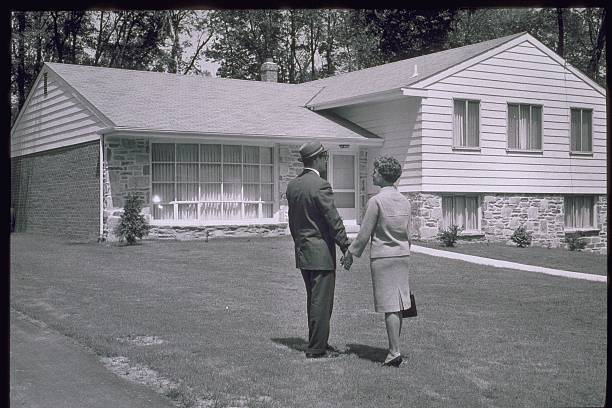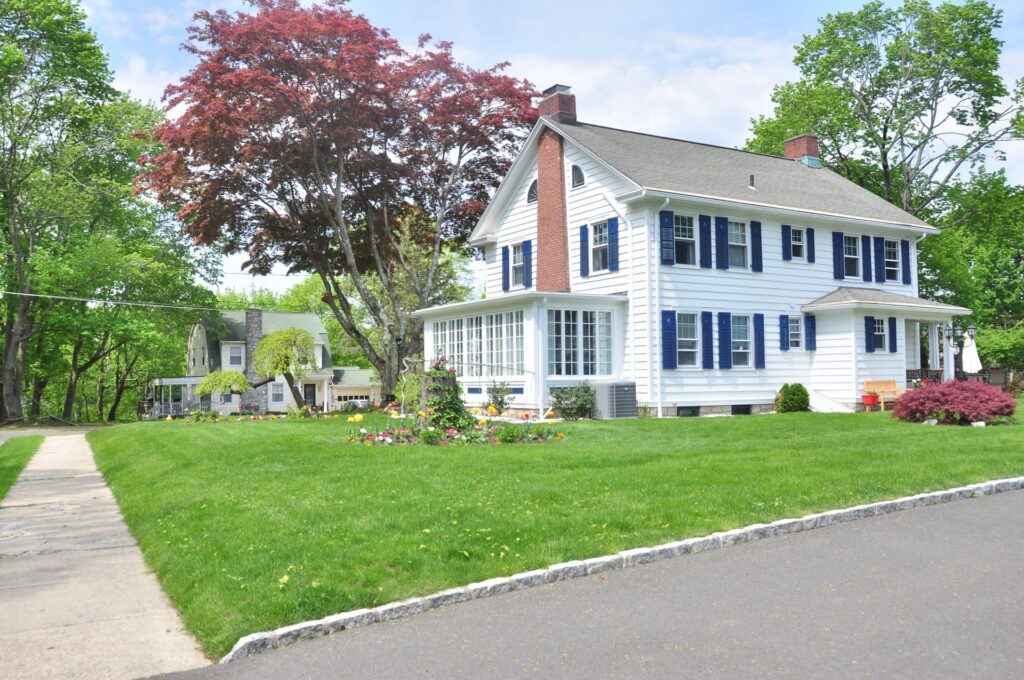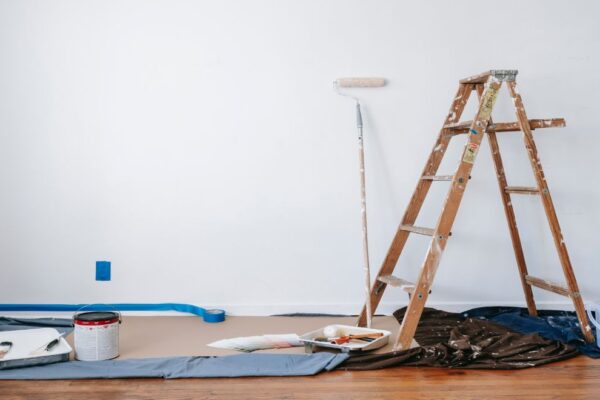If you’re ready to take the initial steps toward purchasing a home, you may be thinking whether you should buy new or used. New built homes are often bigger and more contemporary in design. Older homes, on the other hand, may be found in more established and eccentric communities.
When looking for the appropriate house, there are benefits and downsides to consider with both old and new residences – it all depends on what you’re looking for and your lifestyle. Are you wanting to move into a home that is ready to go and doesn’t require any substantial renovations? Or are you seeking for a character-filled older property and are willing to invest in real estate that needs some work?
Making a list of “must-haves” may help you settle the old house versus new house issue once and for all. Let’s look at some of the advantages and disadvantages of each to get you started.
- The Cons and Pros of New House
- The Cons and Pros of Old House
- What can I afford: an old house or a new house?
- What’s the difference between an old house and a new house?
- Investment: Do you want an established track record or are you ready to take a chance?
- Do you like an old house or modern house interior design?
- Conclusion
The Cons and Pros of New House
The Cons of New House
A new build house is one in which you are the first person to live. For example, you may buy an already built home directly from the builder. There are several advantages to new construction:
- Layout: When constructing a new home, contemporary families are frequently in mind. For example, most feature a family area adjacent to a large kitchen. This meets your requirement for a single spacious space where your family may spend time together.
- Amenities: Updated improvements such as a pool or gym are common in newer properties. This is a fantastic benefit because it eliminates the need to pay for and go to a fitness center.
- Fewer repairs: Purchasing a new built home over an older home usually implies fewer repairs or improvements. It might be a tremendous comfort to know that you won’t have to take on any expensive improvements when you move in.
- More energy-efficient: New construction often includes new, energy-efficient features such as contemporary appliances, windows, and insulation. This means your house will be warmer in the winter and cooler in the summer.
- Warranties: New building frequently includes new appliances with warranties. On new constructed homes, some builders even provide longer warranties. This might provide a lot of comfort, especially if you’re a first-time home buyer.
- Customizable: When you buy a new house, you may frequently personalize it to meet your specific wants and tastes. You may be able to select paint colors, appliance kinds, and whether the property is carpeted or has wood flooring.
- Resells: Unless this is your everlasting home, you will almost certainly sale and upgrade at some point. The improved features that come with a new house might make it more enticing to buyers when it comes time to sell.
The Pros of New House
While there are many advantages to purchasing a new house over an older property, there are also drawbacks. To begin, consider the following disadvantages:
- Higher cost: The modern design and comforts of a new home are not inexpensive. You’ll almost certainly spend more than you would for an older home. A new home, on the other hand, may have a lower price per square foot.
- HOA fees: Pools and gyms are common facilities in newer neighborhoods. That implies you may have to pay homeowners association (HOA) fees to keep them maintained. However, paying HOA fees might make it simpler to keep your home’s worth up.
- Builders aim to enhance their profit margins, and one way they achieve this is by offering a restricted number of floor plans. New construction communities are often extremely identical, and you won’t find the charm that you do in older homes.
- May have a lengthier commute to work and school: As previously said, builders frequently prefer to acquire land outside of the city to save money. This may need a lengthier commute to work and school.
- Limited or no negotiation room: When it comes to buying a home, timing is crucial, and if you contact a builder near the end of their fiscal year, you may be able to haggle on pricing. However, when it comes to selling new building, there is limited space for negotiating. Certain improvements may be available, but the price is unlikely to vary.
- Considerable landscaping: New built houses may need extensive landscaping, which may be time and money-consuming to create.
The Cons and Pros of Old House
The Cons of Old House
Let’s face it: there’s something appealing about purchasing an older property. A spiral staircase, black-and-white tile floor, and other characteristics that are almost rare to obtain in modern construction may be present. Let’s take a look at some of the benefits of purchasing a resale house.
- There are many styles to pick from: There are some older communities where all of the houses appear the same. However, existing communities tend to have a broader diversity of home style types and floor plans, and do not have the same “cookie-cutter” aspect as new homes.
- Prices are often lower: Older homes require a little more TLC than new ones, and they may require considerable repairs. As a result, you may be able to negotiate a cheaper price with the sellers, or perhaps have them pay for some of the closing fees.
- Established communities: Older houses are typically located in more established neighborhoods with a deeper feeling of community.
- Many repairs have already been completed if the house was well-maintained: Some argue that resale homes are a waste of money, yet you may locate residences that have previously been remodeled. Because the house has been occupied for a long period, it is probable that most main concerns have already arisen.
- Fully mature shrubs and trees: When you buy an older home, the landscaping is likely to be mature and won’t take a lot of effort for comprehensive care.
- Faster buying time: Buying an existing house generally takes less time than buying new construction. That means you’ll be able to close on your home and move in much sooner.
The Pros of New House
There is no getting past the reality that older homes have amenities that newer homes do not have. Buying a resale house may be the best option for you, but there are some drawbacks to consider:
- Smaller: The average floor plan size has risen gradually over time. According to Census Bureau data, the typical single-family house size in 2020 was 2,333 ft. In 1973, the typical single-family home was 1,525 feet long. Older homes may have fewer storage space, smaller bedrooms, and no principal bedroom.
- Less energy-efficient: Because a resale property was built with older materials, the windows and insulation are likely to be out of date. Some resale properties may include modifications that have tampered with the structure of the home or possibly contain code violations. There are techniques to make an older home more energy-efficient, but they can be costly.
- More upkeep: You may need to update the roof, get a new furnace, or replace aged carpet. Every few years, you should make specific adjustments to your house.
- Older appliances: Unless you discover an older property that has been extensively renovated, you may need to replace appliances as well. This is beneficial not only for updating your property, but also for reselling it.
- Fewer accessible features: Older homes may lack the accessibility features seen in newer residences. This may not seem important right now, but what if an elderly relative needs to live with you in the future? You may have a more difficult time accommodating them in an old house.
- Hazardous elements might be present: Lead and asbestos were routinely employed in the construction of residential dwellings until recently.That implies an older home may have toxic elements that endanger your family’s health and well-being. If you’re thinking about buying a resale home, get it professionally tested for dangerous items.
- Replacements may not be covered by a house warranty: Many homeowners will get a house warranty to cover any essential appliance updates. However, if the previous owner neglected to maintain the appliances, your home warranty insurer may refuse to pay for the necessary improvements.

What can I afford: an old house or a new house?
Most purchasers’ major concern is “how much house can I afford?” Unfortunately, property prices are higher this year than they have been in the past. According to current housing trends, the national median listing price for active listings in February was $392,000, up 12.9 percent from last year and 26.6 percent from February 2020.
Insurance costs
The cost of house insurance for a property is determined by a variety of criteria, including the year built, roof condition, building quality, and specific features (like swimming pools). However, in general, the newer the home, the lower the cost of insurance. A new house’s insurance costs around 45 percent less than a home built ten years ago.
Whether you choose an old or new home, the decision will be significant. Make sure you do your homework first so you’re satisfied with your new house. Whatever selection you pick, make sure to invest in the lifespan of your house and safeguard your finances with the appropriate home insurance.
What’s the difference between an old house and a new house?
Whereas property pricing may have been the primary concern a few years ago, homebuyers this year must also consider “what is available.” The number of active postings in March was down 18.9 percent from the previous year and 62.3 percent from two years ago.
Investment: Do you want an established track record or are you ready to take a chance?
A house is more than simply a place for family gatherings; it is also a financial investment. And, in the case of an older home, you can see on paper how much the property has appreciated over time. While this does not guarantee future market attractiveness, it does provide something to work with, according to Robert Dietz, chief economist for the National Association of Home Builders.
What about a new house? With little history to fall rely on, this purchase is more of a chance. The price might skyrocket or crash. But, if things go wrong, there is one bright spot.
“You’ll have less work to do to ensure that the home meets market needs in terms of energy efficiency, design, and other amenities,” Dietz says.
Do you like an old house or modern house interior design?
When it comes to choosing a house, appearance is really important. And both old and modern houses have their supporters: An older home will most likely have a feeling of historic history, character, and workmanship. Consider crown molding. Genuine hardwood flooring. And (hopefully) a hidden rear staircase or dumbwaiter.
On the other hand, new homes frequently have the latest and best, such as flexible living areas with wide, accessible halls, and bathrooms and kitchens with energy-efficient, on-trend features.
So, for every five properties for sale in March 2020, there are just two currently.
Buyers face more competition when there is a lack of inventory, thus many will consider purchasing an older property. The good news is that an older home that requires minor renovation will cost less than a freshly built home. The bad news is that the money you save by buying an older house may not last long because older homes are frequently less energy-efficient and so cost more to heat and cool. And something is destined to break down sooner or later.

Conclusion
Whether you buy a new or used property, the process will take much study, patience, and concessions. Making a list of must-have characteristics in a home will help you determine what you can’t live without.
Are you ready to begin the home-buying process? Before beginning your home search, utilize our mortgage calculator to gain a better sense of your budget.





